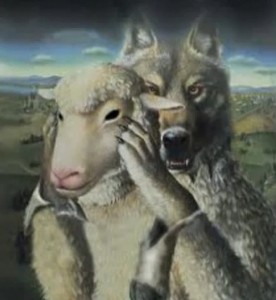By Fr. Dwight Longenecker

I was brought up in a Protestant church steered by dispensationalist theology.
The preachers loved to study the Biblical books of prophecy almost like fortune tellers to try to predict the future. They tried to read the Biblical books of prophecy in one hand and yesterday’s paper in the other.
That process never yields very good results because, while the prophetic books of the Bible do look forward to the future, they are also locked into the historic and cultural circumstances of the time in which they were written. The interesting thing about interpreting these books is that they are locked into the time and culture of their writers, but they also speak of universal themes and timeless scenarios. So, in the book of Revelation the great whore of Babylon is clearly the Roman Empire during the time of writing, but the decadent, demonic and deadly world empire symbolized by Babylon and meaning Rome, also stands for any world empire at any time that threatens the Kingdom of God with the Kingdom of Satan.
The anti Christ is not just one tyrant, but many down through history. It is also a spirit in the world–the spirit that tempted humanity ant the beginning, tempted Jesus in the desert and still attempts world domination today.
In Revelation the anti Christ is accompanied by a “false prophet.” The false prophet is described in Revelation 13:11-15. He is also referred to as the “second beast” (Revelation 16:13,19:20,20:10). Together with the Antichrist and Satan, who empowers both of them, the false prophet is the third party in the unholy trinity.
Read more at Patheos.com
No comments:
Post a Comment